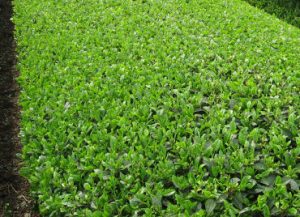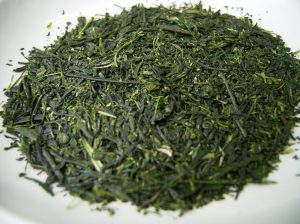 Asatsuyu (あさつゆ) is a cultivar best known for being “natural gyokuro”.
Asatsuyu (あさつゆ) is a cultivar best known for being “natural gyokuro”.
The reason is that it has a taste similar to gyokuro without the need to go through the shading process.
The Asatsuyu cultivar is meant for sencha, and from what I’ve seen online it’s also popular in the form of fukamushicha.
Its name means “morning dew”, and when made into sencha it brews into a bright, yellow color.
Asatsuyu leaves are tender, so care must be taken when steaming and rolling.
Origin of Asatsuyu
 This is an old cultivar, it was registered in 1953 as Japanese tea cultivar number 2!
This is an old cultivar, it was registered in 1953 as Japanese tea cultivar number 2!
It came from the seed of a tea plant found in Uji. Coincidentally, Uji is very famous for its gyokuro production.
This cultivar makes an excellent tea. It has good sweetness, a fragrant aroma and slight astringency.
Why isn’t Asatsuyu more popular?
Unfortunately, this cultivar is very susceptible to frost damage and its yield isn’t as good as that of Yabukita. Hence, most tea farmers are reluctant to cultivate it.
In order to avoid these issues, a cross of Asatsuyu and Yabukita was made. I’ll tell you more about it in the next post.

December 17, 2021
hi Ricardo, I know the same cultivar can be different from different farm and location.
for general speaking , would you recommend ( from your taste preference ) which cultivar has the best taste for sencha among asatsuyu, yutaka midori and yabukita ?
thanks
December 17, 2021
Hi Hengki, thank you for your comment.
In terms of my favorite taste of green tea, I just love a deep umami taste. That’s why I like Asatsuyu so much.
But maybe someone that isn’t into umami as much may prefer the classical taste of Yabukita, etc.
So there’s no perfect tea for everyone, I guess that’s the idea of having many cultivars in the firs place. Just like you wouldn’t want to have a wine store with only one type of wine, you may want to have more than one green tea if possible.
Finally, there’s the aspect of tea cultivation for the particular terroir. Not all cultivars offer the same quality in different places, sometimes you have to cultivate what will work best for you.